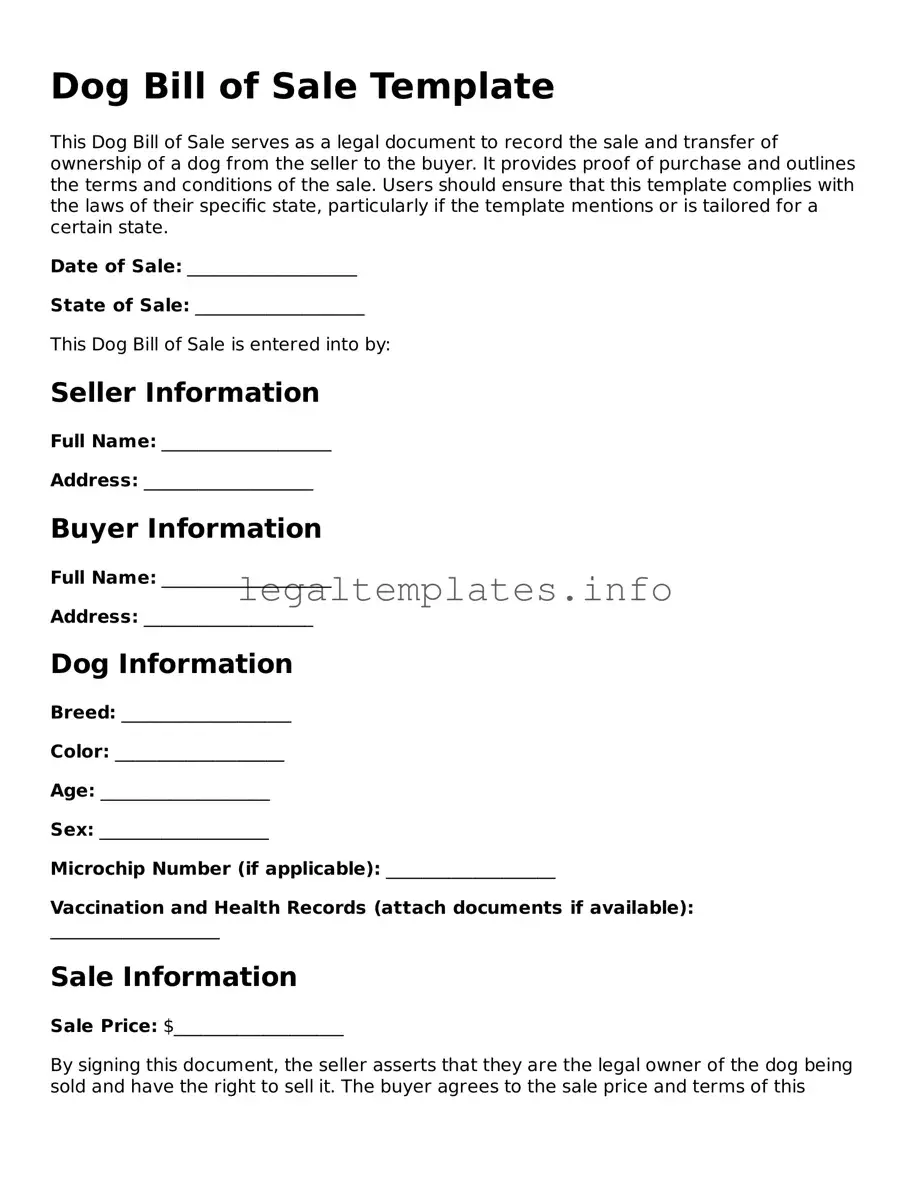What is a Dog Bill of Sale Form?
A Dog Bill of Sale Form is a legal document that records the sale or transfer of a dog from the seller to the buyer. It serves as a receipt for the transaction and includes critical details such as the date of sale, purchase price, and descriptions of the dog. This form provides proof of ownership for the buyer and releases the seller from future liabilities regarding the pet.
Why is a Dog Bill of Sale Form important?
This form is important for several reasons. It ensures a clear transfer of ownership, helps to resolve any future disputes, and can be required for registration purposes with local authorities or breed registries. Additionally, it offers peace of mind for both the buyer and the seller by documenting the terms of sale and any guarantees or agreements made at the time of the transaction.
What information should be included in the Dog Bill of Sale Form?
A comprehensive Dog Bill of Sale Form should include the name and address of both the buyer and the seller, detailed information about the dog (such as breed, color, age, and microchip number), the sale date, the amount paid for the dog, and any other conditions or warranties agreed upon. Signatures from both parties are also necessary to validate the document.
Is a Dog Bill of Sale Form legally required?
While not always legally required, having a Dog Bill of Sale Form is highly recommended. It provides legal evidence of the transaction and ownership, which can be crucial in various situations, such as disputes over ownership or when proving ownership to animal control agencies.
Can I create a Dog Bill of Sale Form myself?
Yes, you can create a Dog Bill of Sale Form yourself, provided it includes all the necessary details and is agreed upon and signed by both parties. However, consulting a legal professional can ensure that the form complies with local laws and includes all necessary legal protections.
Do both the buyer and the seller need to sign the Dog Bill of Sale Form?
Yes, for the form to be considered valid and legally binding, both the buyer and the seller must sign it. The signatures also represent an agreement to the terms and conditions outlined in the document.
What happens if I lose my Dog Bill of Sale Form?
If you lose your Dog Bill of Sale Form, it's recommended to contact the other party involved in the transaction and request a duplicate. Keeping digital copies of the form can also help prevent the loss of this important document.
Can a Dog Bill of Sale Form be used for any breed?
Yes, a Dog Bill of Sale Form can be used for any dog breed. It's a generic document designed to record the transaction of a dog from one party to another, regardless of the dog's breed.
How does a Dog Bill of Sale Form protect the buyer?
The form protects the buyer by providing a legal document that records the purchase and transfers ownership of the dog to them. It details the condition of the dog at the time of sale, any warranties or guarantees made by the seller, and serves as proof of purchase should disputes arise regarding the transaction or ownership.
